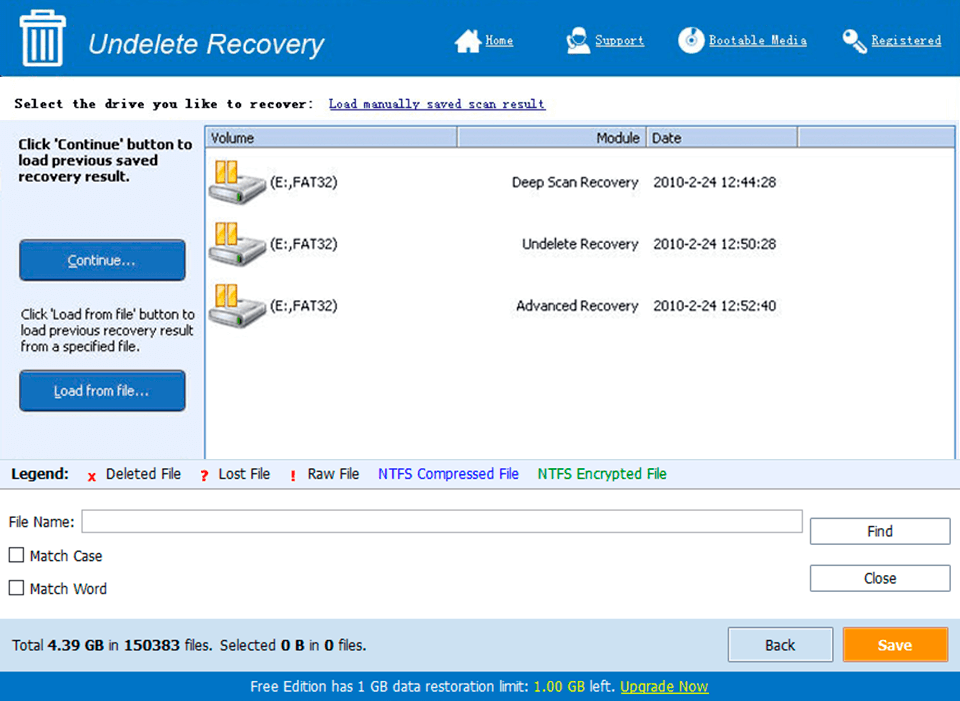
Malwarebytes key 2016 Archives

malwarebytes key 2016 Archives
Video: Cerber, Locky, Kovter top malware families in 2016: Malwarebytes
Between the constant talk of the U.S. elections being hacked, organizations being hit daily by ransomware and webcams being drafted into botnet armies and used to take down major internet organizations, 2016 was a year for the record books.
Ransomware attacks increased 267 percent in 2016, comprising almost 70 percent of all malware distributed during the year, an amount Malwarebytes called unprecedented in its State of Malware report.
While ransomware certainly stole the show in 2016, it was far from the only tool used by cybercriminals with malvertising, tech support scams and botnets, but the damage done by other types of malware pale in comparison.
According to Malwarebytes’ annual State of Malware report, the amount of ransomware spotted between January and November 2016 comprised 68 percent of all exploits and spam payloads with 400 variants being seen in the wild. The now defunct Teslacrypt was the leading culprit for the year, even though it was eliminated as a threat in May when its master key was made public. It was followed by Locky and Cerber, which together managed to do just as much damage during 2016 as Teslacrypt despite getting a late start.
The United States absorbed the most ransomware attacks followed by Germany and Italy.
Top 10 counties impacted by ransomware incidents 1. United States 2. Germany 3. Italy 4. United Kingdom 5. France 6. Australia 7. Canada 8. Spain 9. India 10. Austria |
Malwarebytes researchers noted that the absence of one particular large nation from this list says a lot about where many ransomware attacks originate.
“A country that seems to be missing from this list is Russia. This isn’t because Russian citizens,” the report stated, noting that Cerber and Locky both have the odd attribution of not “turning on” if they happen to infect a computer residing in Russia.
“This is a key clue in possible attribution of the groups behind these families as being associated with, if not located in, Eastern Europe. It also reveals why Russia is not on our list of the top most infected countries, despite its large population and accessibility to technology,” the report said.
Geography also played a role in who the bad guys targeted with malware. The report found that 81 percent of ransomware victims in North America were businesses, while consumer suffered the majority, 51 percent, of attacks that took place in Europe.
The company also sees no changes taking place this year with ransomware. It does not expect any new variants to displace Locky or Cerber, but there will be many new types that are put to use by cybercriminals. Malwarebyts said 60 percent of the ransomware variants spotted in the last half of 2016 were less than a year old, a trend it sees continuing.
However, even ransomware had some downtime in 2016 with Malwarebytes noting that Kovter malware also had a good run, although being used to distribute ad fraud and not just acting as downloader for other malicious software. How it is spread also changed moving away from exploit kits and drive by to phishing emails.
“The importance of Kovter being used in this fashion lies in the same reason ransomware has taken off; it provides a source of direct profit for the attackers. Rather than selling password dumps, credit card information and social media accounts to other criminals, having the victim either pay to get their important files back OR utilizing them to defraud the advertising industry are both viable methods of profiting off users directly,” the report stated.
Ad fraud’s equally nasty cousin adware also metastasized in 2016 becoming more aggressive and intrusive with one variety, Vonteera, being able to disable anti-virus and other security software.
Adware was also found working in conjunction with tech support scams with the malware implementing a Blue Screen of Death and posting a graphic directing the victim to call a fake tech support center where someone would attempt to rip them off.
In one way adware is even a bigger problem than ransomware. Malwarebytes found that adware comprises 77 percent of all threats striking enterprises worldwide. And while it may not be as malicious as ransomware it still is a costly problem.
“While adware is classified as a Potentially Unwanted Program (PUP), and therefore not considered as much of a threat as ransomware is to businesses, it can still represent a significant cost to the enterprise to remediate the infection or re-image the machine. Adware also creates downtime for employees, who may experience slower computers and pop-up ads that distract users from productivity,” the report stated.
Botnets also raised their ugly head in 2016, most notoriously with the Mirai botnet attacks in late September and October and in a new way by using compromised Internet of Things devices as soldiers in the botnet army. Because so few people lock down their IoT devices by changing the preset password and username they are particularly vulnerable to being recruited into a botnet army.
Malwarebytes has called for manufacturers to help make these devices more secure out of the box, but believes the botnet armies will again be on the offensive in 2017.
To develop the data for the report Malwarebytes studied 100 million corporate and consumer computers located in 200 countries between June and November 2016.
Topics:
MalvertisingMalwareRansomwareИсточник: [https://torrent-igruha.org/3551-portal.html]Rehearing Briefs in Enigma Software v. Malwarebytes

A good PUP. Photo by Anik Shrestha, https://www.flickr.com/photos/anikshrestha/
In September, in Enigma v. Malwarebytes, the Ninth Circuit issued a troubling Section 230(c)(2)(B) ruling that allowed plaintiffs’ allegations of anti-competitive animus to override the safe harbor for anti-threat software vendors. It was a 2-1 ruling on a key topic, so it’s the kind of case that could support further proceedings in the Ninth Circuit.
Perhaps not surprisingly, the defendant Malwarebytes has requested en banc or panel review. Its petition for rehearing.
Four amicus briefs were filed in support of Malwarebytes’ brief:
Cybersecurity Law professors’ amicus brief
Venkat and I drafted this brief (with the help of Jess Miers) and filed it on behalf of 7 other professors. Our introduction:
The panel or the Court en banc should rehear this case so that it can reevaluate the ruling’s consequences for cybersecurity. Though anti-competitive animus could be a troubling reason for one software program to block another, the Court’s decision overcorrects for this concern. The panel decision will foster spurious legal accusations of anti-competitive blocking of software programs that are, in fact, dangerous to businesses and consumers. These legal threats will hinder the ability of anti-threat software vendors to properly classify threats to businesses and consumers, which will make the Internet less safe for everyone.
Internet Association amicus brief
Three aspects of the majority’s decision especially concern IA and its members. First, the panel improperly imported a motive-based good-faith limitation into Section 230(c)(2)(B). As explained in Appellee’s rehearing petition, that defies fundamental rules of statutory interpretation and collapses an important distinction between subsection (c)(2)(A), which includes an express “good faith” requirement, and subsection (c)(2)(B), which conspicuously omits one.
Second, by uncritically accepting what appears from the opinion to be Appellant’s bare allegations of anticompetitive animus, the panel’s decision threatens to make it all too easy for plaintiffs to plead around Section 230(c)(2)(B). That result is squarely at odds with this Court’s decisions in Fair Hous. Council v. Roommates.com, LLC, 521 F.3d 1157, 1162 (9th Cir. 2008) (en banc), and Kimzey v. Yelp!, Inc., 836 F.3d 1263 (9th Cir. 2016). Those cases make clear that because Section 230 protects service providers against protracted legal battles (not just ultimate liability), the immunity cannot be defeated at the pleading stage with conclusory assertions. The panel’s contrary approach puts the content-moderation decisions of online providers and users at risk of “death by ten thousand duck-bites,” Roommates.com, 521 F.3d at 1174, opening the door to costly litigation for any plaintiff willing to make even threadbare allegations of improper motive. That subverts Congress’s goal of encouraging and removing disincentives for the development and use of filtering technologies.
Third, the majority’s dictum that the “criteria for blocking online material must be based on the characteristics of the online material, i.e., its content, and not on the identity of the entity that produced it,” is particularly troubling. While perhaps unintended by the panel, this stray statement could be applied in ways that would further undermine the very practices that Section 230 was intended to protect. Online service providers and their users routinely make moderation decisions that apply to entities or individuals, rather than just isolated pieces of content. That happens, for example, when a provider terminates a user’s account or when users deploy tools like Twitter’s Block feature to filter content from certain other users. These measures are a vital part of online self-regulation and are covered by any coherent reading of Section 230(c)(2). The panel’s ambiguous language threatens to arbitrarily limit the ability of platforms and users to protect themselves against abusive, offensive, or problematic accounts or users. At a minimum, therefore, the Court should grant rehearing to correct (or strike) the panel’s errant dicta.
ESET amicus brief
The majority opinion in this case undermines internet security and harms consumer choice in at least two critical ways.
First, the opinion creates a major roadblock to effective computer security software. The decision undercuts statutory immunity for filtering technology whenever there are allegations of anticompetitive animus, even though a purveyor of objectionable material can easily position itself as a competitor and make a facially plausible claim of such animus. This undermines Congress’s goals in enacting the Communications Decency Act, 47 U.S.C. § 230 (1996) (CDA), and harms the procompetitive interests the majority opinion purports to protect.
Second, the decision substitutes litigation for the user choice that has created a thriving marketplace of protections available to consumers. Such choice now exists at two levels: when the user decides what security software to deploy, and when the user chooses to filter out an objectionable program with the aid of that software. The majority opinion would substitute litigation in which the user has no role for both of these choices.
EFF/CAUCE amicus brief
Amici represent the interests of Internet users and support Malwarebytes’ petition because the Enigma panel’s ruling will discourage the development of effective tools that allow users to customize their experiences online. Reading Section 230(c)(2)(B) (47 U.S.C. § 230(c)(2)(B)) to provide unequivocal protection to the providers of filtering tools, which the Enigma panel failed to do, is consistent with the plain meaning of the statute and congressional policy goals, and ultimately best empowers Internet users by incentivizing the development of robust and diverse filtering tools.
Filtering tools give Internet users choices. People use filtering tools to directly protect themselves and to craft the online experiences that comport with their values, by screening out spyware, adware, or other forms of malware, spam, or content they deem inappropriate or offensive. Platforms use filtering tools for the same reasons, enabling them to create diverse places for people online.
Amicus EFF also supports rehearing because it directly benefits from a plain reading of Section 230(c)(2)(B), as its public interest technologists have developed a free tool, called Privacy Badger, that stops advertisers and other third-party trackers from secretly tracking users as they browse the web. EFF’s ability to continue providing free privacy-enhancing tools to Internet users will be seriously threatened if the panel’s incorrect interpretation of Section 230(c)(2)(B) stands.
Finally, amicus EFF supports rehearing because ensuring that Section 230(c)(2)(B) unequivocally protects filtering tool providers encourages those providers to block harmful software that is used to perpetuate domestic violence and harassment. EFF is working to eradicate this so-called “stalkerware,” and that goal is more likely to be achieved when filtering tool providers have the unqualified Section 230(c)(2)(B) immunity that Congress intended.
Case library
Malwarebytes’ petition for rehearing. Supporting amicus briefs from cybersecurity law professors, EFF/CAUCE, ESET, and Internet Association.
Ninth Circuit ruling. Blog post on that ruling.
District court opinion. Blog post on that ruling.
Related decision in Enigma Software v. Bleeping Computer. Blog post on that ruling.
Webcasts: Archive
at 1:00 PM EST
(2016-12-20 18:00 UTC)
at 3:00 PM EST
(2016-12-19 20:00 UTC)
at 12:30 PM EST
(2016-12-15 17:30 UTC)
at 3:00 PM EST
(2016-12-14 20:00 UTC)
at 1:00 PM EST
(2016-12-14 18:00 UTC)
at 11:00 AM EST
(2016-12-14 16:00 UTC)
at 3:00 PM EST
(2016-12-13 20:00 UTC)
at 1:00 PM EST
(2016-12-13 18:00 UTC)
LightCyber
at 3:00 PM EST
(2016-12-09 20:00 UTC)
at 1:00 PM EST
(2016-12-09 18:00 UTC)
at 3:00 PM EST
(2016-12-08 20:00 UTC)
at 1:00 PM EST
(2016-12-08 18:00 UTC)
Anomali
LogRhythm
Lookingglass Cyber Solutions, Inc.
Rapid7 Inc.
at 11:00 AM EST
(2016-12-08 16:00 UTC)
at 3:00 PM EST
(2016-12-07 20:00 UTC)
at 1:00 PM EST
(2016-12-07 18:00 UTC)
Anomali
LogRhythm
Lookingglass Cyber Solutions, Inc.
Rapid7 Inc.
at 3:00 PM EST
(2016-12-06 20:00 UTC)
at 1:00 PM EST
(2016-12-06 18:00 UTC)
at 3:00 PM EST
(2016-12-05 20:00 UTC)
at 1:00 PM EST
(2016-12-02 18:00 UTC)
at 11:00 AM EST
(2016-12-02 16:00 UTC)
at 11:00 AM EDT
(2016-12-01 16:00 UTC)
at 1:00 PM EST
(2016-11-29 18:00 UTC)
at 3:00 PM EST
(2016-11-21 20:00 UTC)
at 1:00 PM EST
(2016-11-21 18:00 UTC)
at 8:25 AM EST
(2016-11-18 13:25 UTC)
Cylance
at 3:00 PM EST
(2016-11-16 20:00 UTC)
at 11:00 AM EST
(2016-11-16 16:00 UTC)
at 3:00 PM EST
(2016-11-15 20:00 UTC)
at 1:00 PM EST
(2016-11-15 18:00 UTC)
IBM
Qualys
RiskIQ
at 11:00 AM EST
(2016-11-11 16:00 UTC)
at 1:00 PM EDT
(2016-11-10 18:00 UTC)
at 3:00 PM EST
(2016-11-09 20:00 UTC)
at 1:00 PM EST
(2016-11-09 18:00 UTC)
at 11:00 AM EST
(2016-11-09 16:00 UTC)
at 1:00 PM EST
(2016-11-07 18:00 UTC)
at 1:00 PM EDT
(2016-11-03 17:00 UTC)
at 1:00 PM EDT
(2016-11-02 17:00 UTC)
at 11:00 AM EDT
(2016-11-02 15:00 UTC)
at 1:00 PM EDT
(2016-10-27 17:00 UTC)
at 1:00 PM EDT
(2016-10-26 17:00 UTC)
at 11:00 AM EDT
(2016-10-26 15:00 UTC)
at 1:00 PM EDT
(2016-10-25 17:00 UTC)
at 1:00 PM EDT
(2016-10-24 17:00 UTC)
at 3:00 PM EDT
(2016-10-21 19:00 UTC)
at 1:00 PM EDT
(2016-10-21 17:00 UTC)
at 11:00 AM EDT
(2016-10-21 15:00 UTC)
at 1:00 PM EDT
(2016-10-20 17:00 UTC)
Forescout Technologies BV
Guidance Software
NSFOCUS
WhiteHat Security
at 1:00 PM EDT
(2016-10-19 17:00 UTC)
Forescout Technologies BV
Guidance Software
NSFOCUS
WhiteHat Security
at 1:00 PM EDT
(2016-10-18 17:00 UTC)
at 11:00 AM EDT
(2016-10-18 15:00 UTC)
at 1:00 PM EDT
(2016-10-17 17:00 UTC)
at 8:30 AM EDT
(2016-10-14 12:30 UTC)
Mcafee LLC
Malwarebytes
NSFOCUS
DomainTools
CYBERBIT Commercial Solutions
at 1:00 PM EST
(2016-10-13 17:00 UTC)
at 1:00 PM EDT
(2016-10-12 17:00 UTC)
CloudPassage
IBM
Rapid7 Inc.
Mcafee LLC
at 11:00 AM EDT
(2016-10-12 15:00 UTC)
at 1:00 PM EDT
(2016-10-11 17:00 UTC)
CloudPassage
IBM
Rapid7 Inc.
Mcafee LLC
at 11:00 AM EDT
(2016-10-11 15:00 UTC)
at 9:00 PM EDT
(2016-10-11 01:00 UTC)
at 1:00 PM EDT
(2016-10-06 17:00 UTC)
at 1:00 PM EDT
(2016-10-05 17:00 UTC)
at 1:00 PM EDT
(2016-10-04 17:00 UTC)
at 1:00 PM EDT
(2016-09-28 17:00 UTC)
at 10:00 AM EDT
(2016-09-27 14:00 UTC)
at 3:00 PM EDT
(2016-09-26 19:00 UTC)
at 3:00 PM EST
(2016-09-22 19:00 UTC)
Intel
at 11:00 AM EDT
(2016-09-22 15:00 UTC)
at 1:00 PM EDT
(2016-09-21 17:00 UTC)
at 11:00 AM EDT
(2016-09-21 15:00 UTC)
at 10:00 PM EDT
(2016-09-21 02:00 UTC)
at 3:00 PM EDT
(2016-09-20 19:00 UTC)
at 1:00 PM EDT
(2016-09-20 17:00 UTC)
at 11:00 AM EDT
(2016-09-19 15:00 UTC)
at 9:00 PM EST
(2016-09-16 01:00 UTC)
at 1:00 PM EDT
(2016-09-15 17:00 UTC)
at 1:00 PM EDT
(2016-09-13 17:00 UTC)
at 8:00 PM EST
(2016-09-09 00:00 UTC)
at 1:00 PM EDT
(2016-09-08 17:00 UTC)
at 11:00 AM EDT
(2016-09-08 15:00 UTC)
at 12:00 PM EDT
(2016-09-07 16:00 UTC)
at 9:00 AM EDT
(2016-09-07 13:00 UTC)
at 1:00 PM EDT
(2016-09-06 17:00 UTC)
at 1:00 PM EDT
(2016-08-31 17:00 UTC)
at 1:00 PM EDT
(2016-08-30 17:00 UTC)
at 1:00 PM EDT
(2016-08-29 17:00 UTC)
at 8:00 PM EDT
(2016-08-26 00:00 UTC)
at 1:00 PM EDT
(2016-08-25 17:00 UTC)
at 1:00 PM EDT
(2016-08-24 17:00 UTC)
at 1:00 PM EDT
(2016-08-23 17:00 UTC)
at 11:00 AM EDT
(2016-08-23 15:00 UTC)
at 3:00 PM EDT
(2016-08-18 19:00 UTC)
at 1:00 PM EDT
(2016-08-18 17:00 UTC)
at 1:00 PM EDT
(2016-08-17 17:00 UTC)
Anomali
Arbor Networks
HP Enterprise Security
NETSCOUT Systems, Inc.
Rapid7 Inc.
at 10:00 PM EDT
(2016-08-17 02:00 UTC)
at 1:00 PM EDT
(2016-08-16 17:00 UTC)
Anomali
Arbor Networks
HP Enterprise Security
NETSCOUT Systems, Inc.
Rapid7 Inc.
at 11:00 AM EDT
(2016-08-15 15:00 UTC)
at 9:30 AM EDT
(2016-08-12 13:30 UTC)
NSFOCUS
ThreatQuotient
DomainTools
at 1:00 PM EDT
(2016-08-11 17:00 UTC)
at 3:00 PM EDT
(2016-08-10 19:00 UTC)
at 1:00 PM EDT
(2016-08-10 17:00 UTC)
at 1:00 PM EDT
(2016-08-09 17:00 UTC)
at 1:00 PM EDT
(2016-08-05 17:00 UTC)
at 11:00 AM EDT
(2016-08-02 15:00 UTC)
at 1:00 PM EDT
(2016-07-29 17:00 UTC)
at 1:00 PM EDT
(2016-07-28 17:00 UTC)
at 11:00 AM EDT
(2016-07-28 15:00 UTC)
at 5:20 PM EDT
(2016-07-26 21:20 UTC)
Waterfall Security
Ultra Electronics, 3eTI
at 1:00 PM EDT
(2016-07-21 17:00 UTC)
Carbon Black
Forescout Technologies BV
Great Bay Software
Trend Micro Inc.
WhiteHat Security
at 1:00 PM EDT
(2016-07-20 17:00 UTC)
Carbon Black
Forescout Technologies BV
Great Bay Software
Trend Micro Inc.
WhiteHat Security
at 3:00 PM EDT
(2016-07-19 19:00 UTC)
at 11:00 AM EDT
(2016-07-19 15:00 UTC)
at 3:00 PM EDT
(2016-07-14 19:00 UTC)
at 11:00 AM EDT
(2016-07-14 15:00 UTC)
at 12:00 PM EDT
(2016-07-13 16:00 UTC)
at 1:00 PM EDT
(2016-07-12 17:00 UTC)
at 1:00 PM EDT
(2016-07-05 17:00 UTC)
at 3:00 PM EST
(2016-06-30 19:00 UTC)
at 1:00 PM EST
(2016-06-30 17:00 UTC)
at 1:00 PM EDT
(2016-06-29 17:00 UTC)
Arbor Networks
Belden
Carbon Black
at 11:00 AM EST
(2016-06-29 15:00 UTC)
at 1:00 PM EDT
(2016-06-22 17:00 UTC)
at 1:00 PM EDT
(2016-06-21 17:00 UTC)
at 1:00 PM EDT
(2016-06-20 17:00 UTC)
at 11:00 AM EST
(2016-06-20 15:00 UTC)
at 3:00 PM EDT
(2016-06-15 19:00 UTC)
at 1:00 PM EDT
(2016-06-15 17:00 UTC)
at 1:00 PM EDT
(2016-06-14 17:00 UTC)
at 11:00 AM EDT
(2016-06-10 15:00 UTC)
at 8:00 PM EDT
(2016-06-10 00:00 UTC)
at 1:00 PM EDT
(2016-06-09 17:00 UTC)
Arbor Networks
HP Enterprise Security
IBM
Mcafee LLC
LogRhythm
NETSCOUT Systems, Inc.
Veriato
at 1:00 PM EDT
(2016-06-08 17:00 UTC)
Arbor Networks
HP Enterprise Security
IBM
Mcafee LLC
LogRhythm
NETSCOUT Systems, Inc.
Veriato
at 1:00 PM EDT
(2016-06-07 17:00 UTC)
at 1:00 PM EST
(2016-06-03 17:00 UTC)
at 1:00 PM EDT
(2016-06-02 17:00 UTC)
at 1:00 PM EDT
(2016-05-31 17:00 UTC)
at 3:00 PM EDT
(2016-05-26 19:00 UTC)
at 1:00 PM EDT
(2016-05-26 17:00 UTC)
at 1:00 PM EDT
(2016-05-25 17:00 UTC)
at 1:00 PM EDT
(2016-05-24 17:00 UTC)
at 11:00 AM EDT
(2016-05-24 15:00 UTC)
at 1:00 PM EDT
(2016-05-20 17:00 UTC)
at 1:00 PM EDT
(2016-05-19 17:00 UTC)
at 11:00 AM EDT
(2016-05-19 15:00 UTC)
at 1:00 PM EDT
(2016-05-18 17:00 UTC)
at 11:00 AM EDT
(2016-05-18 15:00 UTC)
at 7:00 PM EDT
(2016-05-17 23:00 UTC)
at 3:00 PM EDT
(2016-05-17 19:00 UTC)
at 12:00 PM EDT
(2016-05-17 16:00 UTC)
at 1:00 PM EDT
(2016-05-16 17:00 UTC)
at 1:00 PM EDT
(2016-05-13 17:00 UTC)
at 1:00 PM EDT
(2016-05-12 17:00 UTC)
at 1:00 PM EDT
(2016-05-11 17:00 UTC)
at 11:00 AM EDT
(2016-05-11 15:00 UTC)
at 1:00 PM EDT
(2016-05-10 17:00 UTC)
at 1:00 PM EDT
(2016-05-03 17:00 UTC)
at 1:00 PM EDT
(2016-04-28 17:00 UTC)
at 11:00 AM EDT
(2016-04-28 15:00 UTC)
at 3:00 PM EDT
(2016-04-27 19:00 UTC)
at 1:00 PM EDT
(2016-04-27 17:00 UTC)
Veracode
WhiteHat Security
at 10:00 AM EDT
(2016-04-27 14:00 UTC)
at 1:00 PM EDT
(2016-04-26 17:00 UTC)
at 11:00 AM EDT
(2016-04-26 15:00 UTC)
at 3:00 PM EDT
(2016-04-25 19:00 UTC)
at 1:00 PM EDT
(2016-04-22 17:00 UTC)
What’s New in the malwarebytes key 2016 Archives?
Screen Shot

System Requirements for Malwarebytes key 2016 Archives
- First, download the Malwarebytes key 2016 Archives
-
You can download its setup from given links:


